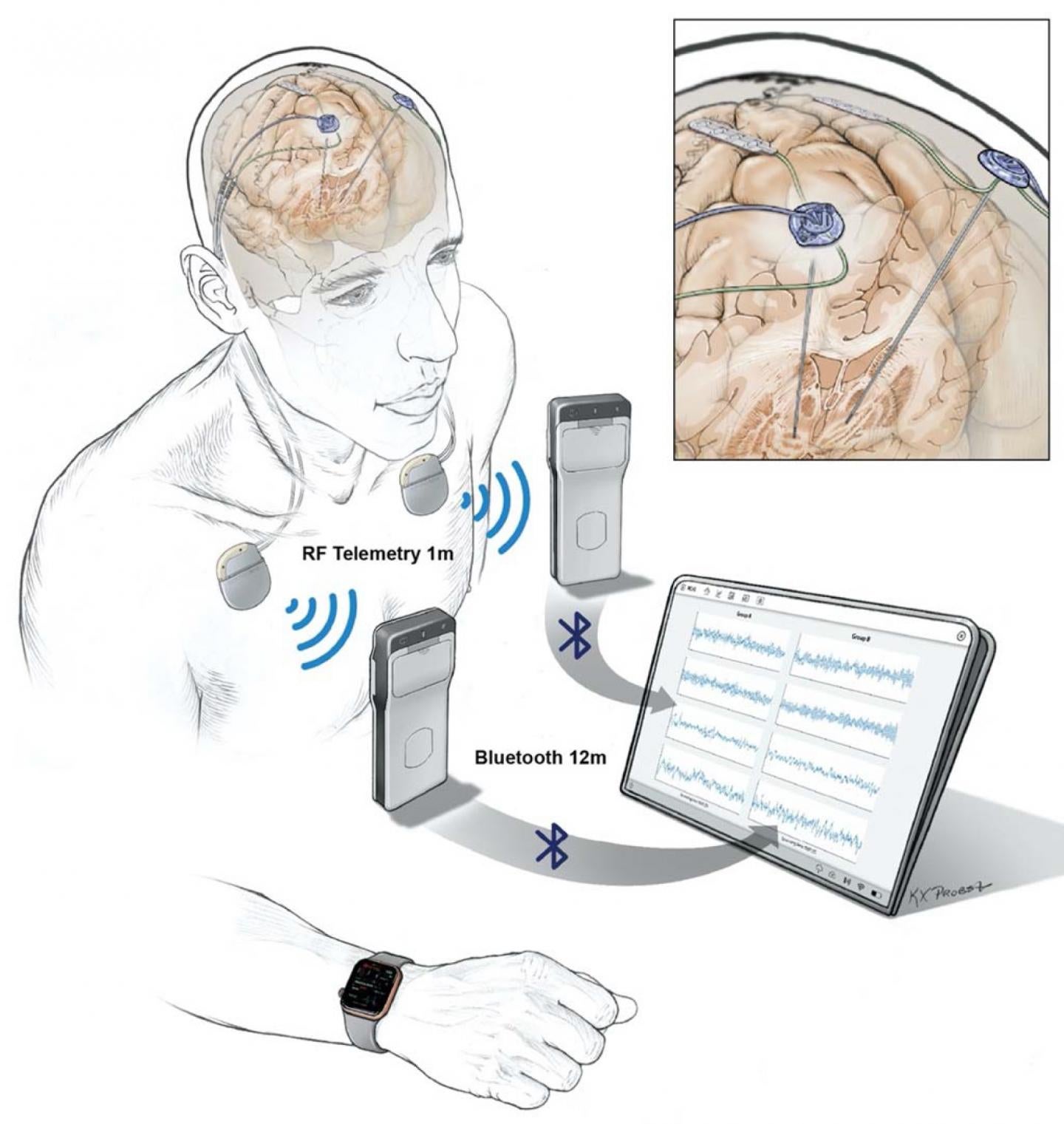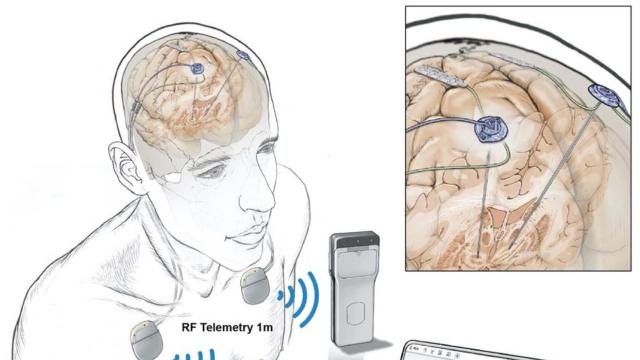In a new study out Monday, scientists say they can now record people’s brain activity wirelessly throughout the day — a feat that could allow for better research into the brain’s inner workings. They then used that data to adjust the treatment of people with Parkinson’s disease through deep brain stimulation. It’s an exciting advancement, but some patients are worried about what continuous, at-home brain monitoring means for privacy.
Deep brain stimulation is when electrical signals are periodically sent to the brain through surgically implanted electrodes that are connected to a pacemaker-like device implanted right underneath the chest. The signals, controlled by the device, are supposed to counteract the erratic brain activity associated with many neurological or psychiatric conditions, in theory helping treat some of their symptoms. So far, deep brain stimulation is known to help people with Parkinson’s and other movement or seizure disorders, but it’s also being explored for treatment-resistant depression.
Deep brain stimulation can be a life-improving therapy for many, but scientists have been trying to improve its effectiveness for some time. Currently, for instance, it can take a long while and multiple hospital visits for doctors and patients to fine-tune the right level and timing of deep brain stimulation to best alleviate their symptoms, based on short-term readings of their brain activity. But scientists at the University of California, San Francisco have been developing an adjustable form of the treatment, one that only sends out stimulation when it’s deemed necessary, based on real-time recordings of brain activity.

Their latest research, published Monday in Nature Biotechnology, shows it’s now possible to seamlessly keep track of someone’s brain activity for long stretches of time white they are at home, so long as they have a working wireless internet connection nearby.
The team built on their prior research to create a novel method of deep brain stimulation. Five volunteers with Parkinson’s disease underwent stimulation with a device specially designed to communicate (through radio frequencies) with another device worn externally. This device then regularly relayed their brain activity through Bluetooth to a tablet, and the data was then uploaded to the cloud where the researchers could monitor it. The cloud server was designed to be compliant with the Health Insurance Portability and Accountability Act, a federal law that mandates the protection of personal patient information stored online. Finally, this information was used to adjust people’s deep brain stimulation if needed.
“This is the first device that allows for continuous and direct wireless recording of the entire brain signal over many hours,” said study author Phillipp Starr, a UCSF researcher, in a statement released by the National Institutes of Health, which helped fund the study. “That means we are able to perform whole brain recording over a long period of time while people are going about their daily lives.”
As important as this research may be, the researchers are aware of the potential ethical challenges that could arise with at-home brain monitoring.
“We have had patients approach us with concerns regarding privacy,” said Starr. “Although we are not at the point where we can distinguish specific normal behaviours from brain activity recording, it is an absolutely legitimate concern. We have told patients to feel free to remove their wearable devices and to turn off their brain recordings whenever they engage in activities they would like to keep private.”
If this work does continue to pan out, it could one day help pinpoint a patient’s individual brain biomarkers for neurological diseases, allowing for a deeper level of treatment customisation that should provide better outcomes. At the very least, the at-home monitoring could validate the initial measurements taken at a hospital without causing as much of a burden on patients. And more broadly, it just might help scientists better understand how the brain works as a whole.
